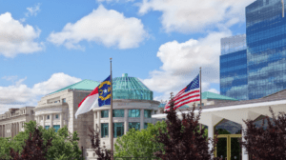When COVID-19 came to the U.S., uncertainty and fear permeated the country. Information was scarce and confusing about how the virus impacted people, how it spread, and what precautions people could take to avoid catching it. Because of this uncertainty around almost every aspect of COVID at the beginning and how rapidly it was spreading across the country, every state issued some sort of pandemic shutdown order requiring businesses to close their doors to the public and people to work from home. While the shutdown orders began as “two weeks to slow the spread”, they quickly became ambiguous and open-ended.
But not all shutdown orders were the same.
As the pandemic wore on, some states loosened their COVID protocols and allowed businesses to begin opening back up while other states tightened COVID protocols, extended shutdowns and stay-at-home orders for seemingly indefinite timelines.
While the ultimate efficacy of lockdowns and quarantine orders for preventing COVID-19’s spread have been debated, thanks to all-encompassing research from the Georgia Center for Opportunity (GCO), the serious effects of lockdowns and quarantines on state’s economy’s—and more importantly their recoveries—are now clear.
Recovery speed dependent on pandemic lockdown severity
In the fall of 2021, the GCO released their paper titled “State Pandemic Response: Understanding the Impact on Employment & Opportunity” to measure the actual impact that different levels of shutdown orders had on state’s economies. While many of the results reflected what most economists and policy experts expected, the level of direct correlation between shutdown orders, job losses, and recovery strength is stark.
The GCO’s study found that:
- The severity and degree to which each state responded to the pandemic varied greatly state-by-state.
- The number of jobs lost in a given state was directly associated with how severely that state shut down its economy.
- More severe responses not only impacted immediate job losses but have had significant impact on long-term recoveries.
- The severity of response did not seem to have a significant impact on hospitalizations or death rates from the pandemic.
- The speed at which states were able to recover from a job perspective was directly related to the severity by which they responded.
While it makes sense that the states that shut down their economies for months, if not years, would suffer more severe and prolonged job losses than states that allowed their economies to open back up, the significance of these findings goes beyond unemployment rate statistics. As the paper states:
“While the shutdowns affected all Americans to varying degrees, it’s clear that those most affected were low-income and poor Americans. Minor changes in the way that a state responds to events like a pandemic could result in hundreds of thousands of people being unable to work and provide. The results suggest that state and local governments must craft their economic response to the pandemic with greater care, seeking to impact employment less severely.”
GCO’s credibility on the issues around work and nonwork were bolstered due to their previously published research including the Nonfinancial Impact from Nonwork: Review of Research-Based Evidence.
Turning research into results
After GCO released their report, they went to work sharing its findings with the media and key state leaders across the country.
The new report was covered in multiple stories across news outlets such as The Center Squared, Christianity Daily, Forbes, and Real Clear Policy.
The team at GCO, Pelican Institute, and Texas Public Policy Foundation (the co-authors of the report) also shared the report findings with the offices of Georgia Governor Kemp, Georgia Congressman Rick Allen, and Utah Congressman Burgess Owens. GCO has worked with Congressman Allen and Owens on a bill to allow the integration for workforce development and safety net programs. GCO’s Eric Randolph also shared the study’s findings at the Fall 2021 Economic Freedom of North America Network conference.
Pandemic policies going forward
Hindsight is always 20/20. Today we can clearly see the poorly planned and executed policy decisions made during the pandemic. And while it’s understandable to have missteps at the outset of a global pandemic with an unknown virus, how quickly and effectively our public officials adapt, pivot, and improve is the measure of truly effective public policy.
The COVID-19 pandemic permanently altered the trajectory of our country. But liberty-minded public policy advocates like those at the GCO are working to ensure that the effects of the COVID-19 pandemic don’t inflict too much permanent damage. Because as Eric Randolph wrote in Real Clear Policy “The best path to prosperity is a job. Work brings dignity, hope, and purpose to people by allowing them to earn a living, gain skills, and build social capital that endures. Advancing policies that connect people with work, along with reducing barriers for new jobs and opportunities, should be our goal, rather than making a government the first resort for help that disconnects people from what work brings.”








